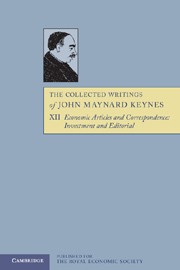4 - THE TITHE
Published online by Cambridge University Press: 05 November 2012
Summary
The tithe had long been a part of the English agricultural scene. This tax, levied in kind, of one tenth of the yearly produce of the land had originally been for the support of the clergy and the Church. However, in many cases, rights to receive tithes had passed from ecclesiastical to lay hands as a result of the dissolution of the monasteries by Henry VIII. In 1836 tithes were commuted and a rentcharge fixed instead. This rentcharge was based on an index of the prices of wheat, barley and oats averaged over the previous seven years. With the sharp rise in grain prices during the War, the rentcharge rose from £77 in 1915 to £109 3s. 11d. in 1918 per £100 par value in 1836. Such a rise, which most people expected to continue as grain prices would remain high after the war, led to an outcry which resulted in The Tithe Act, 1918, which pegged the rentcharge at its 1918 level for a further seven years. This pegging protected the farmer against the rising prices of the post-war boom, but it meant that the subsequent collapse in prices had no effect as well. True, tithe-payers could under earlier legislation redeem their liability by paying a capital sum of 25 times the par value, and many did so after 1917. Nevertheless, in the early 1920s more than £3 million per annum was being paid to tithe-holders.
- Type
- Chapter
- Information
- The Collected Writings of John Maynard Keynes , pp. 649 - 688Publisher: Royal Economic SocietyPrint publication year: 1978

